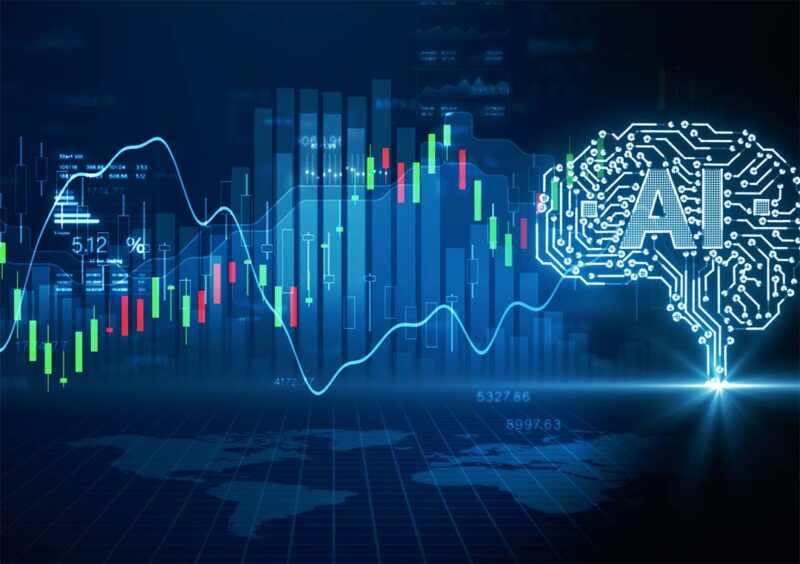In the fast-paced world of finance, automated trading software has emerged as a double-edged sword, piquing the interest of both novice traders and seasoned investors alike. On the one hand, the allure of high-frequency trading and algorithmic strategies promises the potential for significant profits, while on the other, it presents a labyrinth of legal and ethical considerations that can leave even the most savvy traders feeling overwhelmed.
As technology continues to reshape the landscape of trading, understanding the ins and outs of these tools becomes paramount. Are they a gateway to success or a slippery slope to financial ruin? This article delves into the intricate world of automated trading, shedding light on its legality, the risks involved, and the critical factors you should consider before you dive into the exhilarating, yet unpredictable waters of automated trading.
Understanding Automated Trading: What It Is and How It Works

Automated trading, at its core, refers to the use of computer algorithms and auto trading software to execute trades in financial markets without direct human intervention. This sophisticated technology analyzes market trends, price movements, and trading volumes, making decisions based on pre-set criteria.
Imagine a scenario where a program can scour countless data points in mere seconds, identifying patterns and making trades that a human trader might overlook or take hours to analyze. The beauty of automated trading lies in its ability to operate around the clock, seizing fleeting opportunities that emerge even when the trader is asleep.
However, this technology is not without its complexities; understanding how these systems function—from the intricacies of algorithm development to the nuances of market behavior—is essential for anyone who dares to dive into the world of algorithmic trading.
The Legal Landscape of Automated Trading
The legal landscape of automated trading is a complex and evolving realm, marked by a patchwork of regulations that vary significantly across different jurisdictions. In some countries, trading algorithms operate under strict oversight, demanding transparency and compliance with established financial standards.
Meanwhile, others exhibit a more laissez-faire attitude, granting traders considerable leeway yet raising concerns about market manipulation and systemic risks. As automated trading gains popularity, the regulatory bodies are forced to grapple with multifaceted challenges, such as algorithmic transparency, data privacy, and the ethical implications of machine-driven decisions. Investors must tread carefully; adherence to local laws and regulations is not just a legal necessity but a vital component of risk management in this high-stakes arena.
Ultimately, the balance between fostering innovation and ensuring market integrity remains delicate, making it imperative for traders to stay informed and vigilant.
Potential Risks and Challenges Associated with Automated Trading

Automated trading systems, while alluring for their potential to enhance efficiency and profitability, come with a host of risks and challenges that traders must navigate. First and foremost, technical glitches can lead to unexpected losses—imagine a system designed to capitalize on market movements suddenly misfiring due to a software bug or a connectivity issue. Furthermore, the reliance on algorithms means that any flaw in the logic or data inputs could magnify losses.
Market conditions can shift rapidly, and automated strategies may not always adapt swiftly enough, risking significant financial exposure in volatile environments. Additionally, the psychological element of trading is largely stripped away, potentially leading to overreliance on the system without critical human oversight.
Finally, regulatory scrutiny looms large, as traders might find themselves in murky waters regarding compliance and ethical trading practices. In this landscape of potential pitfalls, a cautious, informed approach is essential for anyone considering automated trading.
Conclusion

In conclusion, while automated trading software presents an enticing opportunity for traders seeking to enhance efficiency and capitalize on market trends, it is essential to approach this technology with caution. The legal landscape surrounding automated trading varies significantly across regions and can be fraught with regulatory challenges.
Traders must conduct thorough research and understand both the advantages and potential pitfalls associated with this method. By staying informed about legal requirements and market risks, investors can make more educated decisions and harness the power of automation while safeguarding their investments.
Ultimately, a balanced perspective on the benefits and risks will empower traders to navigate the complexities of modern finance confidently.


